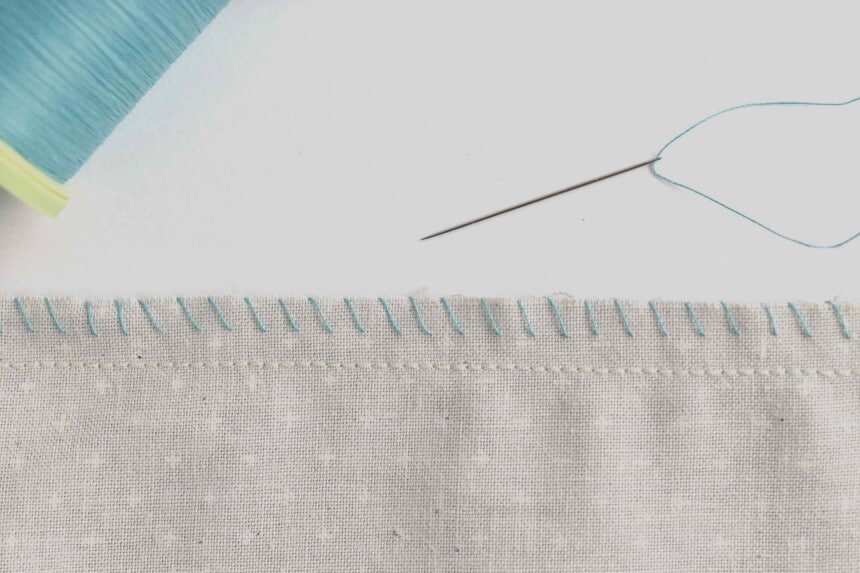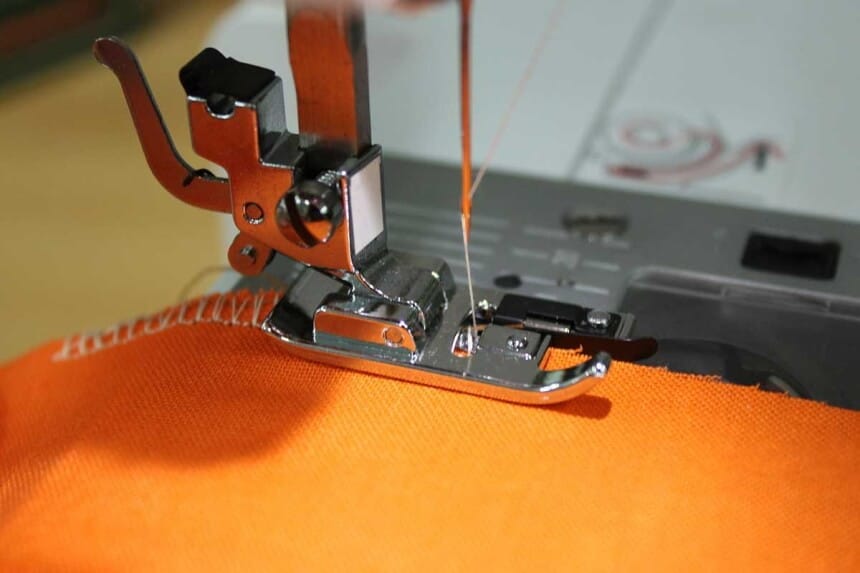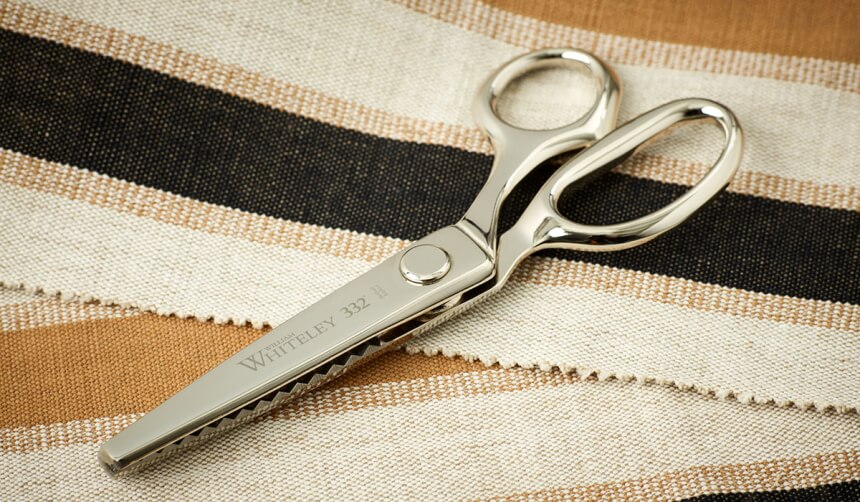

Many of us enjoy wearing the latest styles and having a fashionable wardrobe, or revamping the home with new soft furniture. Unfortunately, this can be a costly process, but you can save money Trusted Source The Cost of Sewing Nearly All of My Clothes - The Billfold Can sewing save you money? Yes, probably. Does sewing save me money? Absolutely not. www.thebillfold.com by sewing these items yourself.
However, it is very difficult to create a professional look if you have frayed edges and uneven seams. This is where an overcast stitch can help. This stitch can be a great way to finish your items to create a pro style that will wow your family, friends and guests.
In this article, we’ll explore what is an overcast stitch and how you can accomplish it by hand or with your sewing machine. So, please read on to discover how you can use an overcast stitch on your sewing projects.
Overcast stitching is a type of edge finishing stitch. It can be sewn by hand or using an overcast stitch machine. This stitch can be used to neaten up edges and prevent raw edges of fabric unraveling.
Once you perfect it, the overcast stitch can be a vital part of your sewing project, particularly if you’re using fine fabrics. This will help you to minimize fraying and prolong the lifespan of your home-made clothing, soft furnishings and accessories.
 As we touched on above, it is easy to overcast stitch by hand. If you are already familiar with how to sew by hand, you should be able to accomplish this in several steps.
As we touched on above, it is easy to overcast stitch by hand. If you are already familiar with how to sew by hand, you should be able to accomplish this in several steps.
You can also add a double overcast variation for added strength. This involves stitching a second row by returning to the beginning, crossing over each stitch in the row to create x’s.
 You can easily make this kind of stitch if you have a sewing machine that is capable of creating different overcast stitches, such as the one of the best Brother sewing machines. These machines have special foot attachments for that purpose.
You can easily make this kind of stitch if you have a sewing machine that is capable of creating different overcast stitches, such as the one of the best Brother sewing machines. These machines have special foot attachments for that purpose.
An overcast foot has a guide where you place the edge of the fabric. You can find the ones that will work only for a certain make, i.e., Singer overcast stitch feet, but there are also generic feet that fit on different makes and models of sewing machines.
There are several steps to create an overcast stitch on your machine.
Depending on the pattern, it may be a good idea to stitch your seam and when overcast stitch to minimize edge fraying. Some models of sewing machines have a stitch that does a seam stitch and an overcast stitch at the same time.
Before you start overcast stitching, it is a good idea to trim the raw edges neatly. Overcast stitching will not trim as you sew, so you want to begin with an unfrayed, clean edge.
Attach your overcast foot and put the fabric under the foot. Be sure to line up the raw edge to the left of your foot’s guide.
Set your machine to the overcast stitch. Typically, you need to set a stitch width of 5.0, but some lengths are determined by the internal stitch settings. If you’re not sure, check the manual for your sewing machine model.
Be sure to use a good quality thread like the Milija thread set. Hold the threads to the side and taut so they will not tangle. You will be able to release them once you’ve done a few stitches.
 The purpose of overcast stitching is to finish your seam, but there are some options you can do with a regular or intermediate sewing machine and some sewing basics.
The purpose of overcast stitching is to finish your seam, but there are some options you can do with a regular or intermediate sewing machine and some sewing basics.
Fraying can ruin the look of garments, soft furnishings and decorative items. So, it is important when you’re sewing these items that you secure the hem to minimize or eliminate fraying. An overcast stitch is a great way to accomplish this.
You can easily learn how to overcast stitch by hand or with a sewing machine without needing to purchase an expensive serge machine or overlocker. Using an overcast stitch will neaten seams and finish edges to create a pro finish on all your sewn items.